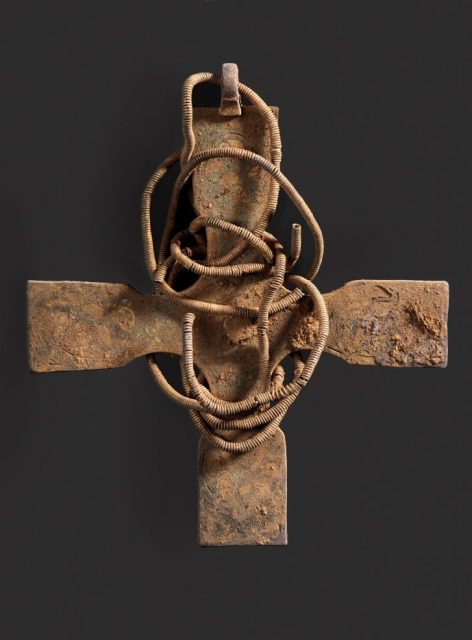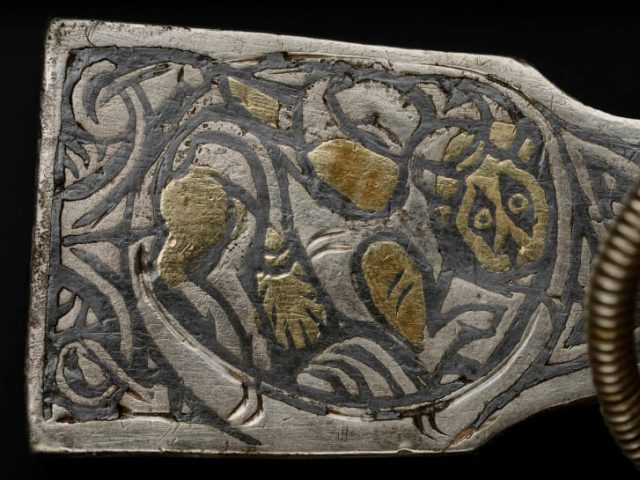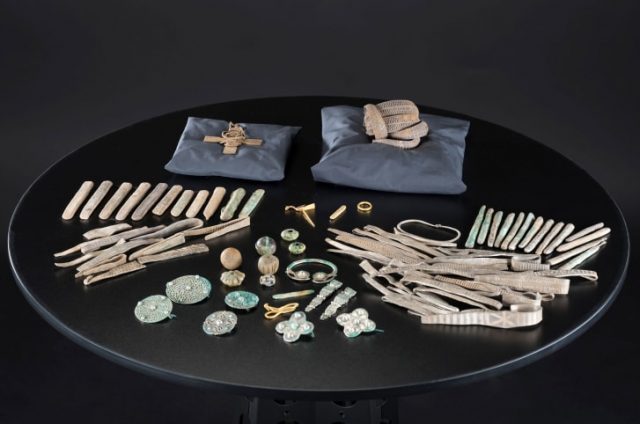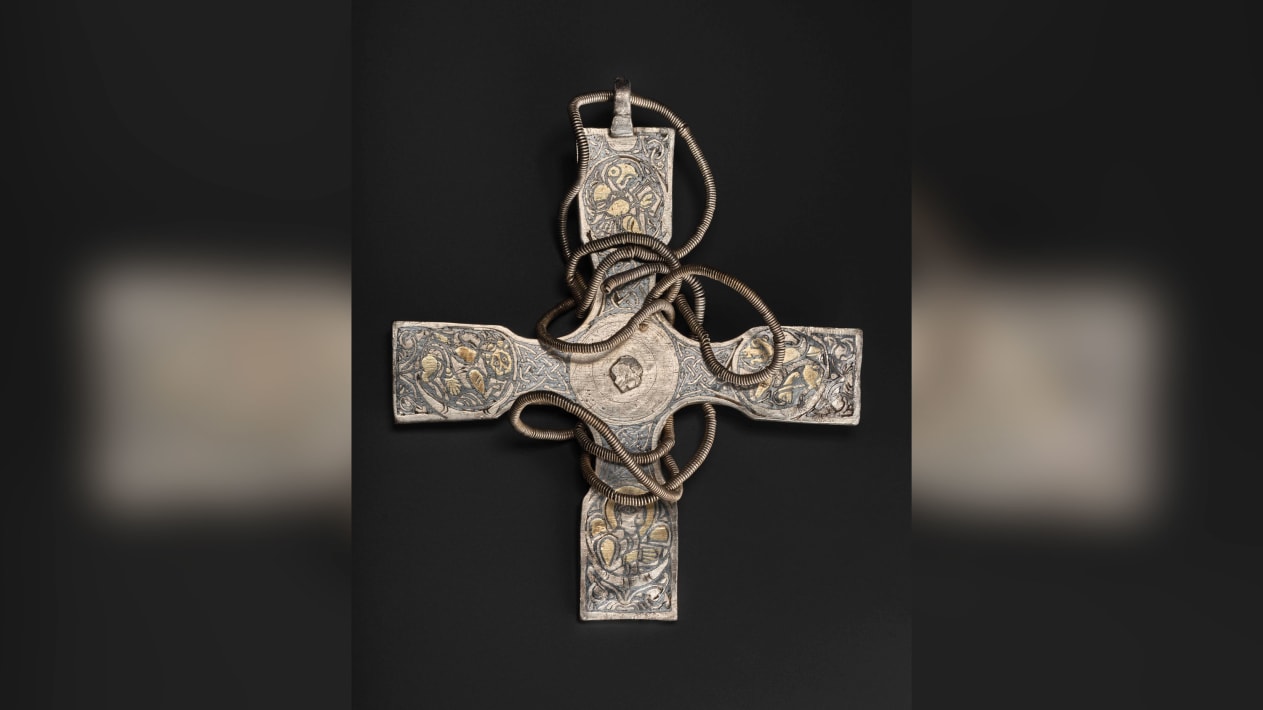An Anglo Saxon silver cross dating back to the 10th century has been given a serious spruce-up… and it looks absolutely beautiful. Following years of careful conservation work, the Scottish artifact is showing its true colors. In the process experts are given a glimpse into a crucial period of British history.
Part of 2014’s headline-grabbing Galloway Hoard, it was wrapped in a parcel and buried approx AD 900. There was also a serious build-up of dirt that needed to be cleaned off.
Conservators reportedly used a special porcupine quill, capable of scraping away the crud without marking the treasure.

What patient history hounds have revealed is a pectoral cross “decorated using black niello and gold-leaf” according to CNN. Niello being a compound made from elements such as sulphur and silver.
Crafted in old Northumbria, it was intended to be worn round the neck as demonstrated by the accompanying spiral chain. The design on the cross features New Testament gospel authors Matthew, Mark, Luke and John. Or rather their earthly symbols, writes The Independent: a man, a lion, a cow and an eagle respectively.
The level of workmanship is taking people’s breath away, even though they can’t stop talking about it. Quoted by The Observer, principal curator Dr Martin Goldberg describes the items as “just spectacular.” He adds, “There really isn’t a parallel”.

Reports make reference to one other 9th century cross known to exist – only this one lacks the gorgeous detail on display here.
Because the cross is assumed to be part of Viking plunder, he also calls it “one of the survivals”. Who knows why it was buried, or what would have happened had the individual concerned dug it up again. Quoted by the Daily Record, Goldberg says the find “reveals a whole new set of questions”. For example, was it “destined to be melted down into the types of ingots it was found with?”
https://www.youtube.com/watch?v=QXJ_QSEyR24
As The Independent notes, the Galloway Hoard is the “richest and rarest collection of Viking-era objects ever to be found in Britain and Ireland.” Consigned to the earth in 4 parcels, it was resurrected centuries later by metal detectorist Derek McLennan.
When McLennan pulled the cross from the sand he thought it was a muck-encrusted spoon. Alongside this were the aforementioned ingots, together with ancient jewelry and a gold pin shaped like a bird.
National Museums Scotland also highlights “a decorated silver-gilt vessel, the only complete lidded vessel of its type ever discovered in Britain and Ireland.” Experts are amazed the wrapping material made it through the ages to boot.
There are over 100 items in the hoard, valued at a jaw-dropping $3 million. The cross’s incredible condition surely makes the treasure even more valuable. The Independent reports it may have been made for “a high-standing cleric or even a king”, such is its lustre.

McLennan stumbled upon a small fortune, but the Church of Scotland challenged his right to enjoy the profits last year. They claim because the hoard was found on church land half the money should go to them. According to a 2019 article from The Independent the detectorist and businessman promised to split the proceeds. Under Scottish law however it appears to be a case of finders keepers.
Aside from its monetary value, the cross also represents a turbulent and fascinating time when Scotland and others were forming into their own nations.
Additionally, the find suggests greater Viking involvement in the area, beyond swooping in to raid churches. Prof Goldberg says the “mixed material of the Galloway Hoard exemplifies this dynamic political and cultural environment” (The Observer).
Another Article From Us: Is This the Childhood Home of Jesus Christ, Archaeologists Believe So
National Museums Scotland plans a public tour of the hoard, provisionally running from February to May. That might be subject to change with a pandemic at large. But this amazing silver cross has waited a thousand years to dazzle onlookers. Another few months won’t hurt…
